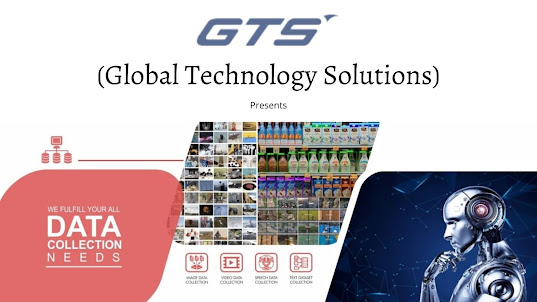How GTS Can Easily Fulfill Your AI Data Collection Needs?
Artificial intelligence is the process of making use of machines to improve the lifestyle and quality of individuals by making their everyday routines interesting and easy. AI isn't meant to be a dominant force , but rather a complementing one that collaborates with humans to resolve the seemingly impossible and clear the way to collective evolution.
At present we are in the right direction, with major breakthroughs occurring across the globe with the aid of AI. For healthcare, for example, AI systems accompanied by machine learning models are helping doctors learn more about cancer and develop solutions for it. Disorders of the brain and issues such as PTSD are being addressed with the aid of AI. It is developing vaccines at fast paces due to AI-powered clinical tests and simulations.
In addition to healthcare, every sector or industry that AI affects is being transformed. Autonomous cars and smart convenience stores wearables such as FitBit as well as our smartphones cameras can capture superior pictures of our faces using AI.
With the rapid advancements taking place in the AI sector Companies are stepping into the market with a variety of applications and solutions. Because of this, the world AI market is predicted to be worth of approximately $267 billion by year 2027's end. In addition, 37% of businesses that are in operation today have already implemented AI methods to their products and processes.
In addition, nearly 77 percent of the services and products that we utilize in the present are powered AI. The concept of AI is growing in all verticals What can companies do to compete without AI?
What exactly is AI Data Collection?
The machines don't have a brain independent of themselves. In the absence of this abstract idea renders them inaccessible to opinions, facts, and capacities such as thinking, cognition, and more. They are simply immovable devices or boxes that are occupying space. In order to transform them into effective mediums, you'll need algorithms, and most importantly, data.
The types AI Training Data
Today, AI Data Collection is an broad concept. The term "data" can refer to anything. It could refer to text, photos, video, or a combination of all these. In essence, everything that helps an machine to accomplish its job of learning and maximizing outcomes is data. For more information about the various types of data, here's short list:
The data could come from a unstructured or structured source. For those who aren't familiar data, structured datasets are those with a clear meaning and the format. They are easy to understand by computers. Unstructured On the other hand they are the details of datasets which are scattered across the internet. They don't adhere to a certain arrangement or format, and they require human intervention to extract useful information from such data.
1.Text
One of the most plentiful and well-known types of data. Text data may be organized in the shape of information derived of databases GPS navigators, worksheets Medical devices, documents, and more. Unstructured text can be documents that are handwritten, surveys or images of text, emails as well as social media posts and much more.
2.Audio
Audio data sets help companies create more efficient chatbots and systems, create better virtual assistants, and much more. They also aid in understanding accents and pronunciations in the many different ways a query or question could be addressed.
3.Images
The Image Dataset are another popular type of dataset that is utilized to serve a variety of purposes. From autonomous cars to applications such as Google Lens to facial recognition images can help systems come out with seamless solution.
4.Video
Videos are more detailed data that allow machines to comprehend things in greater depth. Video data is derived from digital imaging, computer vision and other.
The advancements in AI together with the global pandemic has stimulated businesses to increase their interactions with customers via virtual. More often, they're turning to chatbots, virtual assistants and other technologies that use speech to facilitate these interactions effectively. These kinds of AI depend on a method called Automatic Speech Recognition, or ASR. ASR is the process of converting speech into text. It allows humans to talk to computers and be recognized.
ASR that is based on Natural Language Processing
As previously mentioned, NLP is a subdomain of AI. It's the process of instructing computers to recognize natural language. In terms of the most basic the following is a broad description of how a speech recognition application that makes use of NLP could perform:
- It is possible to speak a command, or ask an inquiry for your ASR program.
- It converts your spoken words into a spectogram that can be a computer-readable version the audio file that contains your speech.
- Acoustic models clean up your audio files by eliminating any background sounds (for example dogs barking, or static).
- The algorithm splits the cleaned-up data into phonemes. These are the sounding blocks. In English for instance, "ch" and "t" are phonemes.
- The algorithm looks at the phonemes of the sequence and uses statistical probability to deduce phrases and words from the sequence.
- An NLP model can analyze the context of the sentences, and determine the meaning of "write" instead of "right" for instance.
- After the ASR program has a clear understanding of what you're trying say The program will create an appropriate response , and utilize text-to-speech converter to communicate with you.

Comments
Post a Comment